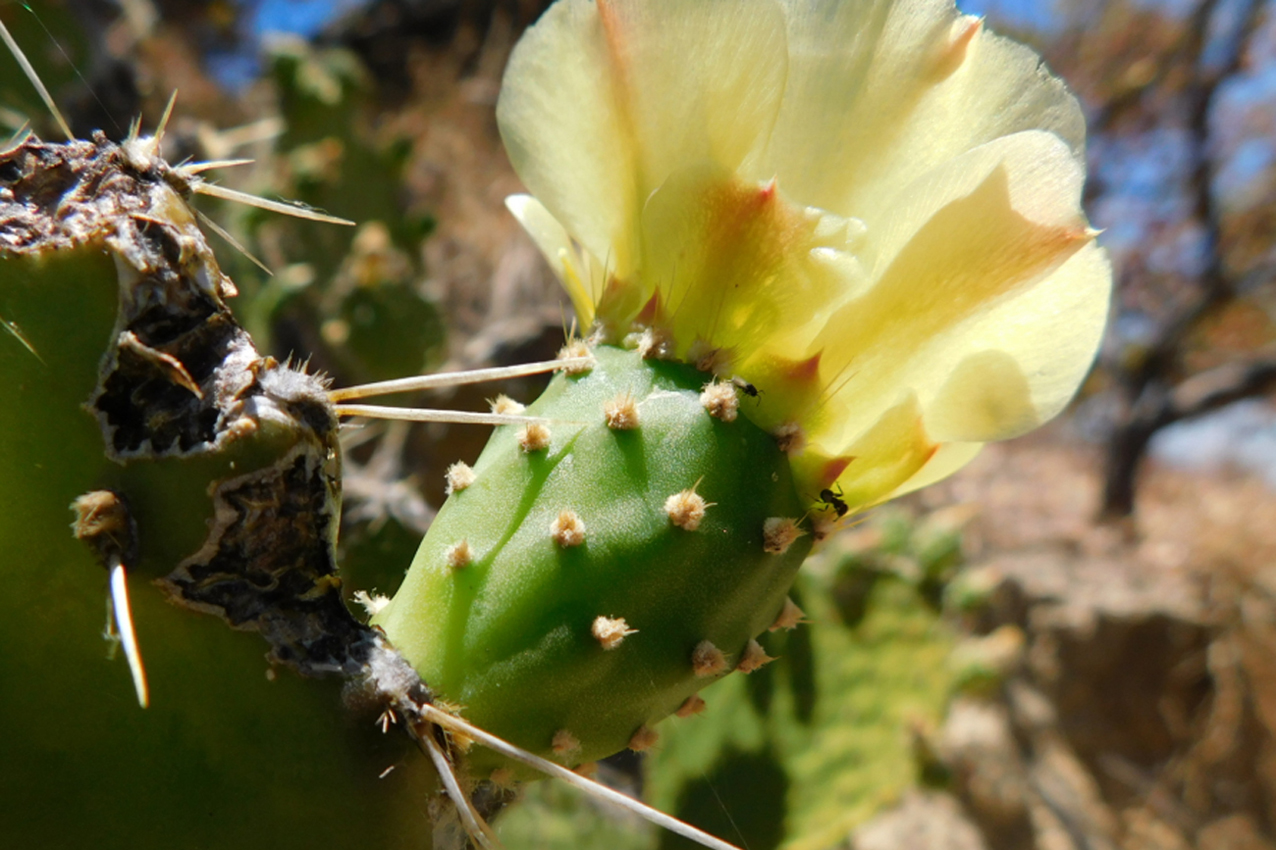Abstract
Two new species of prickly-pear/nopal (Opuntia sierralagunensis and O. caboensis, Cactaceae) are described and illustrated here; both occur in the tropical deciduous forest plant community found in the Cape region of the Baja California Peninsula, Mexico. Previously, these two species had been overlooked and were considered extreme forms of species described from the Sierra de La Giganta (e.g., O. comonduensis, O tapona), located hundreds of kilometers away. However, with an improved collection of specimens and field knowledge of the Opuntia species in the region, we have determined that these prickly-pears are new to science and are restricted to the Cape region. We provide justification to separate them from sympatric congeners and other similar species in the southern peninsula.
References
Bravo-Hollis, H. (1978) Las Cactáceas de México, Vol. I. Universidad Nacional Autónoma de México. México DF. 743 pp.
Coulter, J.M. (1896) Preliminary revision of the north American species of Echinocereus, Cereus, and Opuntia. Contributions of the United States National Herbarium, United States Departament of Agriculture. Washington, DC. pp. 355–462.
GBIF (2020) GBIF Home Page. Available from: https://www.gbif.org (accessed 20 August 2020)
Griffith, M.P. & Porter, J.M. (2009) Phylogeny of Opuntioideae (Cactaceae). International Journal of Plant Sciences 170 (1):107–116. https://doi.org/10.1086/593048
Hernández, H.M., Gómez-Hinostrosa, C., Bárcenas, R.T., Puente, R. & Reyes-Agüero, J.A. (2014) A checklist of the subfamily Opuntioideae (Cactaceae) from North and Central America. Succulent Plant Research 8: 185–200. [https://www.researchgate.net/publication/330485479]
León de la Luz J.L., Pérez J.J., Domínguez, M. & Domínguez, R. (1999) Flora de la Región del Cabo de Baja California Sur, México. Serie Listados florísticos de México. Vol. XVIII. Instituto de Biología de la Universidad Nacional Autónoma de México. 39 pp.
León de la Luz, J.L., Domínguez, R. & Domínguez, M. (2012) Florística de la Selva Baja Caducifolia de la Península de Baja California, México. Botanical Sciences 90 (2): 143–162. [http://scielo.org.mx/scielo.php?script=sci_arttext&pid=S2007-42982012000200004]
Lenz, L.W. (1992) An annotated catalogue of the plants of the Cape Region, Baja California Sur, Mexico. The Cape Press, Claremont, CA. 114 pp.
Majure, L.C., Puente, R., Griffith, M.P., Judd, W.S., Soltis, P.S. & Soltis, D.E. (2012a) Phylogeny of Opuntia s.s. (Cactaceae): clade delineation, geographic origins, and reticulate evolution. American Journal of Botany 99: 847–864.https://doi.org/10.3732/ajb.1100375
Majure, L.C., Puente, R. & Pinkava, D.J. (2012b) Miscellaneous chromosome numbers in Opuntieae DC (Cactaceae) with a compilation of counts for the group. Haseltonia 18: 67–78. https://doi.org/10.2985/026.018.0109
NaturaLista (2020) Web Page facility. Available from: www.naturalista.mx (accesed 5 October 2020)
Rebman, J.P. (2015) Seven new cacti (Cactaceae: Opuntioideae) from the Baja California region, Mexico. Madroño 62 (1): 46–67. https://doi.org/10.3120/0024-9637-62.1.46
Rebman, J.P., Gibson, J. & Rich, K. (2016) Annotated checklist of the vascular plants of Baja California, Mexico. Proceedings of the San Diego Natural History Museum 45: 1–352.
The Plant List (2021) Version 1. Published on the Internet: http://www.theplantlist.org/ (accessed 24 May 2021)
Thiers, B. (2019) Index Herbariorum: A global directory of public herbaria and associated staff. New York Botanical Gardens Virtual Herbarium. Available from: http://sweetgum.nybg.org/ih/ (accessed September 2020)
Shreve, F. & Wiggins, I.L. (1964) Vegetation and Flora of the Sonoran Desert, 2 vols. Stanford University Press. Stanford, CA. 1740 pp.
Wiggins, I.L. (1980) Flora of Baja California. Stanford University Press, Stanford, CA. 1025 pp.


